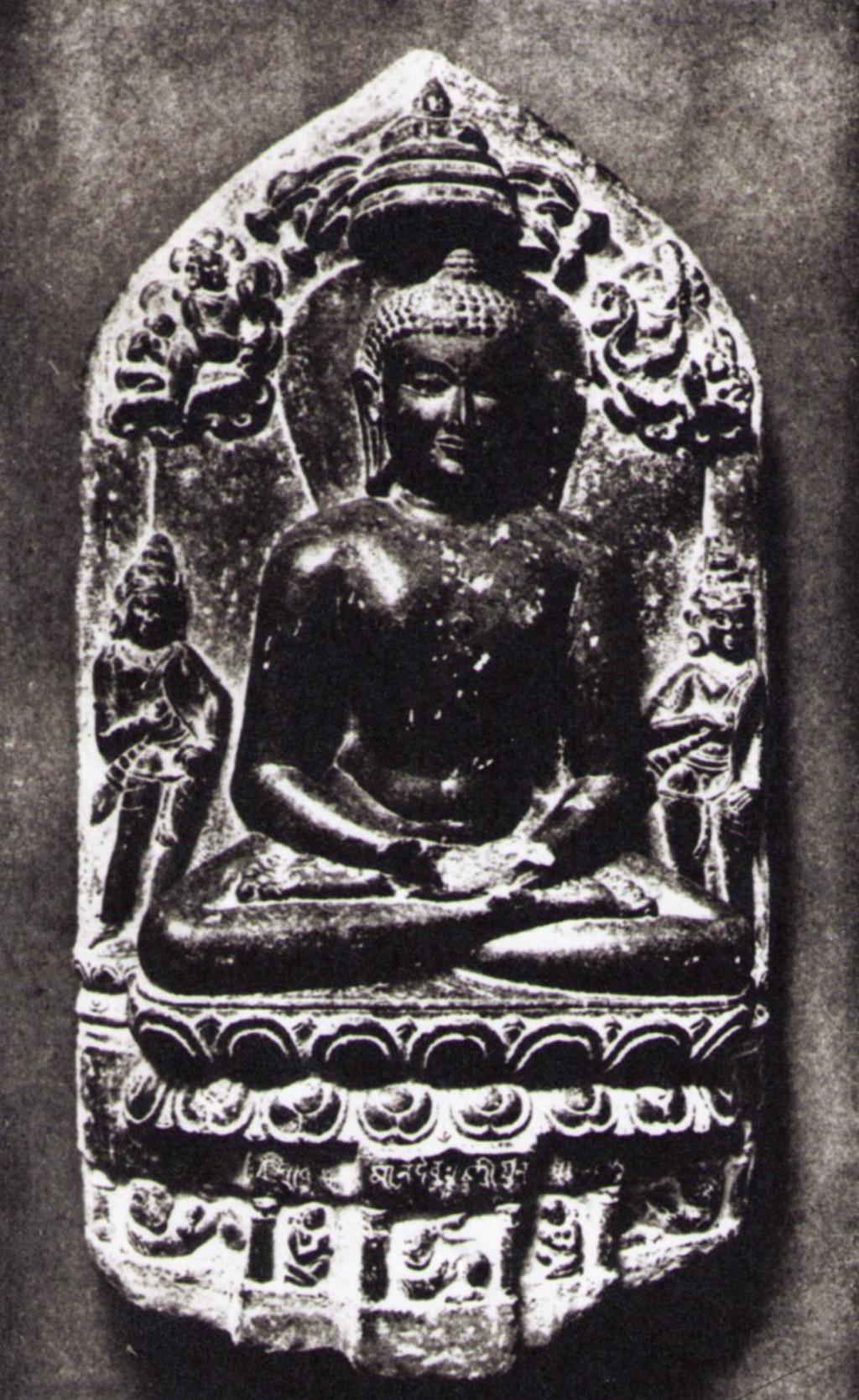
This article was published in Lalit Kala 10 (1961, Pl. XXXVIII - picture and text).
The Safety of Indian Art
The student of art who wants to examine the image of “Sri-Vardhamāna-devaḥ” on the Vaibhāragiri published some decades ago by Rai Bahadur Ramaprasad Chanda should not be surprised to find its place in the Jaina temple empty. It is not known to the present writer under what circumstances the image was removed from Rājgir and smuggled out of India. All he can say is that it was put up for auction in Hamburg.
R. Chanda published in the section “Exploration” of the Annual Report of the Archaeological Survey of India for 1925/26 a short report on “Jaina Remains at Rajgir” (pp. 121-127). This report included, on p. 127, a reference to our image and it was illustrated in Plate LVII, fig. a, as a seated image of the twenty-fourth Tīrthaṅkara Vardhamāna in a modern temple on the Vaibhāragiri.

Chanda observed that the letters of the short votive inscriptions on this and another image indicated that they were products of the last phase of the school of the twelfth century A.D. This image of Mahāvīra Vardhamāna appears now as No. 14 in the catalogue “Auktion 119, am 26. November 1962, Indien - Siam - Persien - Syrien - Peru - Mexiko, Dr. Ernst Hauswedell, Hamburg 36”. The photo (Pl. XXXVIII) is reproduced from the catalogue, which describes it as a Buddha seated on a lotus-throne hailing from Nalanda. The estimated value in the catalogue is DM 9.000. The suppliers remain anonymous but the catalogue states that items 1, 7-41, 43-55, i.e., all the Indian sculptures except a few objects from Gandhāra (2-6) and one piece from Nepal (42), were supplied by “A”, in other words by one and the same person. R. Chanda's photo shows the face of the Tīrthaṅkara badly damaged. But since his time, the mouth and the nose, which had got destroyed completely, have been restored, the eyes repaired, and several small holes on the face closed. There can be little doubt that this was done when the image was still in the possession of the Jains.
Amongst the sculptures reproduced in the catalogue there are some of which the best Indian museums could be proud. We are told that a piece of art is safer in some big collection than in the Indian countryside. No doubt many pieces have been spoilt by the application of whitewash etc., not to speak of the risks to which scattered images in the jungle are exposed. But the methods of some dealers also deserve closer examination. For even if the dealers are motorized they may find it often difficult to handle images of great weight. So that the agents of some art-dealer who haunted Jaina temples in central India some time ago just cut off the heads of the statues and left the remainder on the spot. If such methods were to be followed by others one can well image the havoc which may one day result to India's art-treasures.
Exported images disappear for the greater part in private collections, and the provenance of the pieces is often obscured on purpose or simply lost sight of. But in the long run simple displacement will not remain the sole method of response to the growing demand for works of Indian art. It is to be feared that without adequate counter-measures cases of mutilation as those alluded to above will become more frequent. If the Indian customs authorities, who have after all succeeded in recovering much lighter and smaller items, are on the watch for hidden sculptures, smuggling will be reduced to a minimum and the "work" of the professional collector will become less remunerative.
 Prof. Dr. Klaus Bruhn
Prof. Dr. Klaus Bruhn